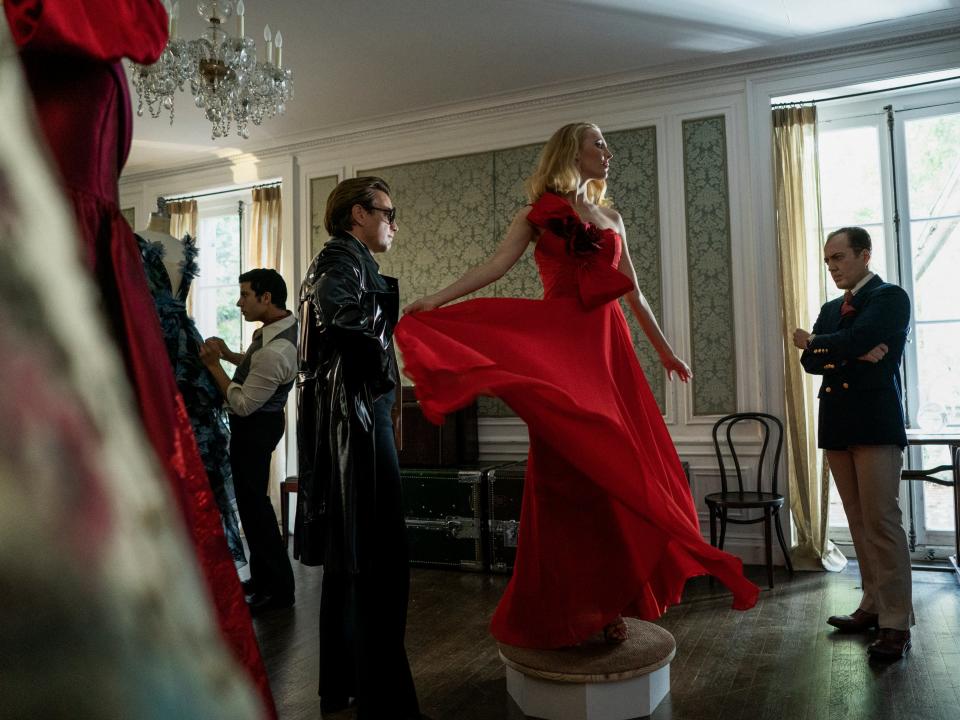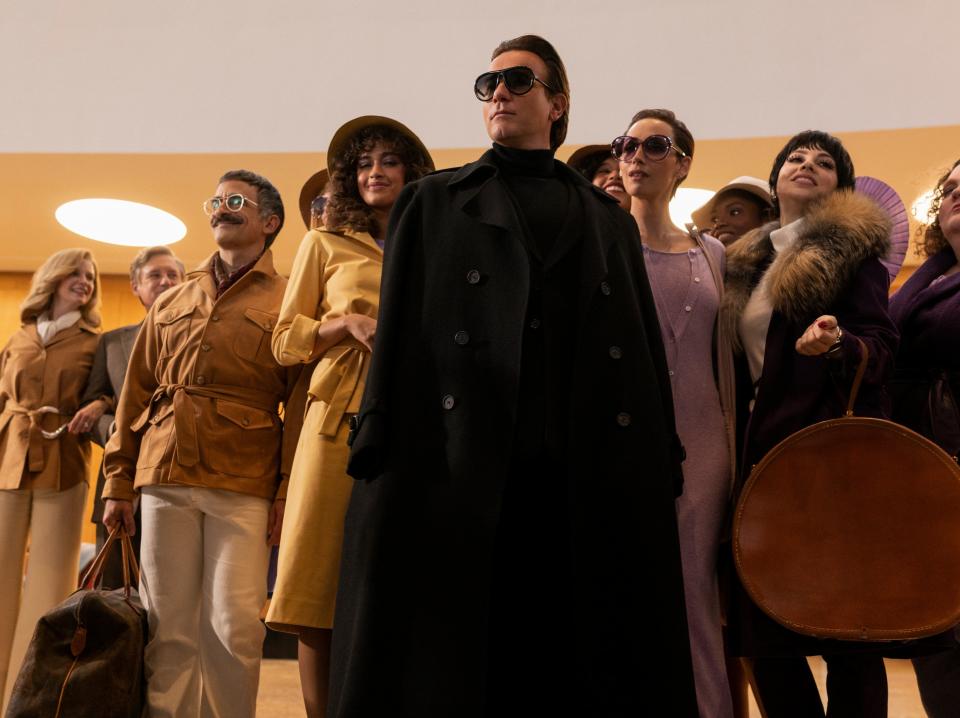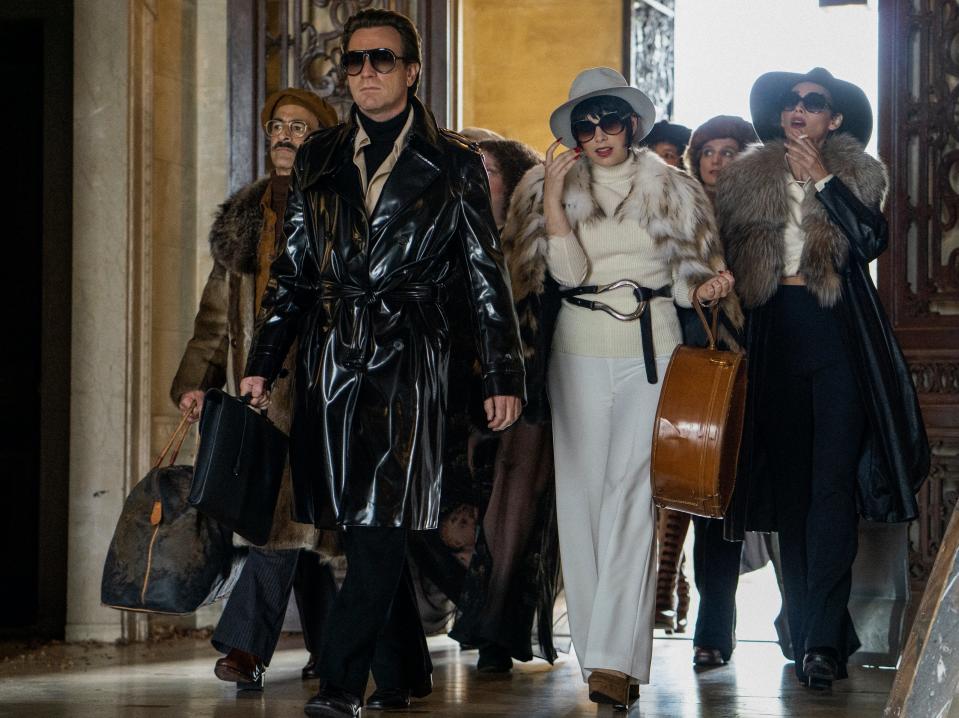Halston was more than just a party boy – he was a master of fashion construction

Model behaviour: Ewan McGregor as Halston and Juan Carlos Diaz as Oscar De Le Renta in the Netflix series ‘Halston’
(Atsushi Nishijima/Netflix)Ten years ago, I probably knew little more about the fashion designer Roy Halston Frowick than the average fashion-interested American born after 1985. I knew about his penchant for the novel fabric Ultrasuede, of his iconic bathing suit on the cover of Time magazine, and of his infamous love of Studio 54.
Halston – as he was known – has a legacy now inseparable from that club – the disco music, sex, drugs and glamour. His story is always told as a designer who burned fast and bright, worked hard and partied harder before being ousted from his brand and coming to a tragic and untimely end at the hands of Aids. It’s little wonder why Netflix would zero-in on him as the subject for a high-budget, high-drama series. Halston, starring Ewan McGregor, is released this week.
But what gets missed in this telling of his career is what made him truly unique: his craft. Halston was incredibly gifted at making clothes – clothes that were so well designed and in-line with the times that they have come to symbolise a generation.
So much of fashion (its history, its power, its beauty) resides in physical garments tucked away in museums and archives. But today, fashion is more about images that you flick through on your Instagram feed. While images help form the fantasy of fashion – wild nights on a dance floor or the glamour of the runway – they only tell half of the story: Halston the myth. The hand, the mind and the passion of Halston the person live on in the material objects he made.
When I first started working at The Museum at the Fashion Institute of Technology (FIT) in New York, one of my many duties as a curator was to lead tours on the history of 20th-century fashion. I would roll a rack of clothes down a fluorescent-lit hallway into a small room we used as a classroom. On the door was a shiny plaque designating the room as the “Halston Archive Room”. A framed picture of the designer hung on the wall inside and lining the room were black filing cabinets numbered and locked.

At the time, Halston wasn’t much more than a name to me, one I rattled through when I reached the 1970s portion of the tour while making some mention of the fact that the museum held his archive. It wasn’t until a few years later, when I began collaborating with the museum’s deputy director Patricia Mears on the exhibition Yves Saint Laurent + Halston: Fashioning the 70s, that I realised the scale and importance of this inconspicuous room.
Behind each filing cabinet façade reside thousands of paper patterns, sketches and runway photographs brimming with stories captured in folds of paper. From file to file, you can feel Halston’s presence. There are his initial sketches – almost always in black on a sheet of lined paper torn from a legal pad, a testament to his voracious mind (he was known to keep a legal pad on his desk as a repository for his seemingly endless stream of ideas).
These garments weren’t just about a look or an image, they were meant to be worn, felt, lived in
Sketching wasn’t something he did at a particular time in the workday or at a particular point in the planning of a collection. He was always sketching – while on the phone, in meetings. The ones he liked best would get passed on to his master tailor with notes on fit and fabric scribbled in the margins. Xerox and facsimile copies of these legal-pad sketches proliferate every inch of the archive. They were used by his tailors, seamstresses and merchandisers. They were stapled to fabric orders, shrunk down and glued into portfolios. At each stage you can find examples of Halston’s own notes to members of his team.

While this level of involvement could feed the notion of Halston as an obsessive who did everything to excess, what it tells me is that he was a man deeply interested in each step of making his clothes. These garments weren’t just about a look or an image, they were meant to be worn, felt, lived in, and enabled a lifestyle he envisioned for his clients.
While researching for Yves Saint Laurent + Halston, I remember pulling racks and racks of looks designed by both Halston and Saint Laurent for the project. You could immediately tell who designed which piece by the construction. A Saint Laurent couture evening dress would be riddled with hook-and-eyes, drapery stitched in place, and subtle boning – all carefully devised and often done by hand to ensure the wearer was closed into the garment just right, with everything perfectly finished around the body.
A Halston evening dress was designed to take the form of the wearer’s body rather than give shape to it
By contrast, a Halston evening dress would have no boning and no fastenings of any kind (no zippers, hook-and-eyes, nothing). It was designed to take the form of the wearer’s body rather than give shape to it. The wearer could often decide how they wanted to close the dress around their body with straps, ties, or a belt. This may not sound complex by today’s standards, but it was revolutionary.

Consider Halston’s famous “sarong” dress. At first glance it’s a strapless columnar dress. There is no surface ornament, pattern or decoration of any kind, just the fabric and the body. The dress is constructed from a single pattern piece shaped like a parallelogram. It is draped at an angle to spiral around the body and then sewn with a single snaking seam. Made from hammered silk satin, the piece would have taken an incredible amount of precision to sew on a machine. One missed stitch in the snaking seam and the garment would be ruined. But by draping the fabric in this work-intensive spiral, Halston ensured the fabric would cascade along the wearer’s body rather than hang straight, creating a sexy, diaphanous silhouette.
Read more: Halston review: Ryan Murphy reins it in to tailor elegant fashion biopic
His sarong dress is a masterclass in minimalism. Minimalism is not simplicity. In Halston’s hands it was a form of design as complex as the most ornate haute couture garment, and his clients were more than aware of this – it’s why they chose to wear his designs.
So while the glitz of Studio 54 might outshine the studied mastery of his clothing, it is this brilliance, this craft, this love of fashion at its material core that made Halston a legend.
Yves Saint Laurent + Halston: Fashioning the 70s, by Patricia Mears and Emma McClendon is out now
Halston is on Netflix now
Read More
Harry Styles wins British single at the BRIT awards
Do period drama costumes shape our perception of royalty?
Urban Decay’s latest collection is in collaboration with Prince

 Yahoo Movies
Yahoo Movies 